Traveling is one of the most beautiful experiences for every person, whether it’s vacations with family, business trips, or going on a trip with the aim of getting to know some new, interesting place. If you have a dog, and you want to travel with him, you should know some basic ways how to keep a dog calm on a plane.
In modern times, airplanes allow us to reach any part of the world. If you have a furry companion, in some cases it is possible that you will have to take it with you on the trip you will go by airplane. This may sound interesting, but it can also be quite stressful.
Many dogs will have a fear of traveling by plane, especially if you are just preparing them for their first flight.
In order for both you and your pet to bear this experience easier, we believe that our tips on how to keep a dog calm on a plane will come in handy. Read on to find out how to survive the flight without too much stress for both you and your pooch.
How To Keep A Dog Calm On A Plane?
Before even planning to travel by plane with your pet, you need to check the exact policy of the airline you are flying with regarding flying with dogs. If you are wondering: Can I buy my dog a seat on the plane?, this question is quite complex and will significantly depend on your airline.
But, today we are here to answer another question, which is how to calm your dog so that he feels safe and not scared while flying on an airplane.
Air travel can be quite stressful for any dog; even if your dog is not normally fearful, this does not mean that flying on a plane will be a completely pleasant experience for him. Therefore, if you are planning to fly with your dog sometime in the future, it would be very useful to prepare in advance.
1. Keep Your Dog With You During The Flight
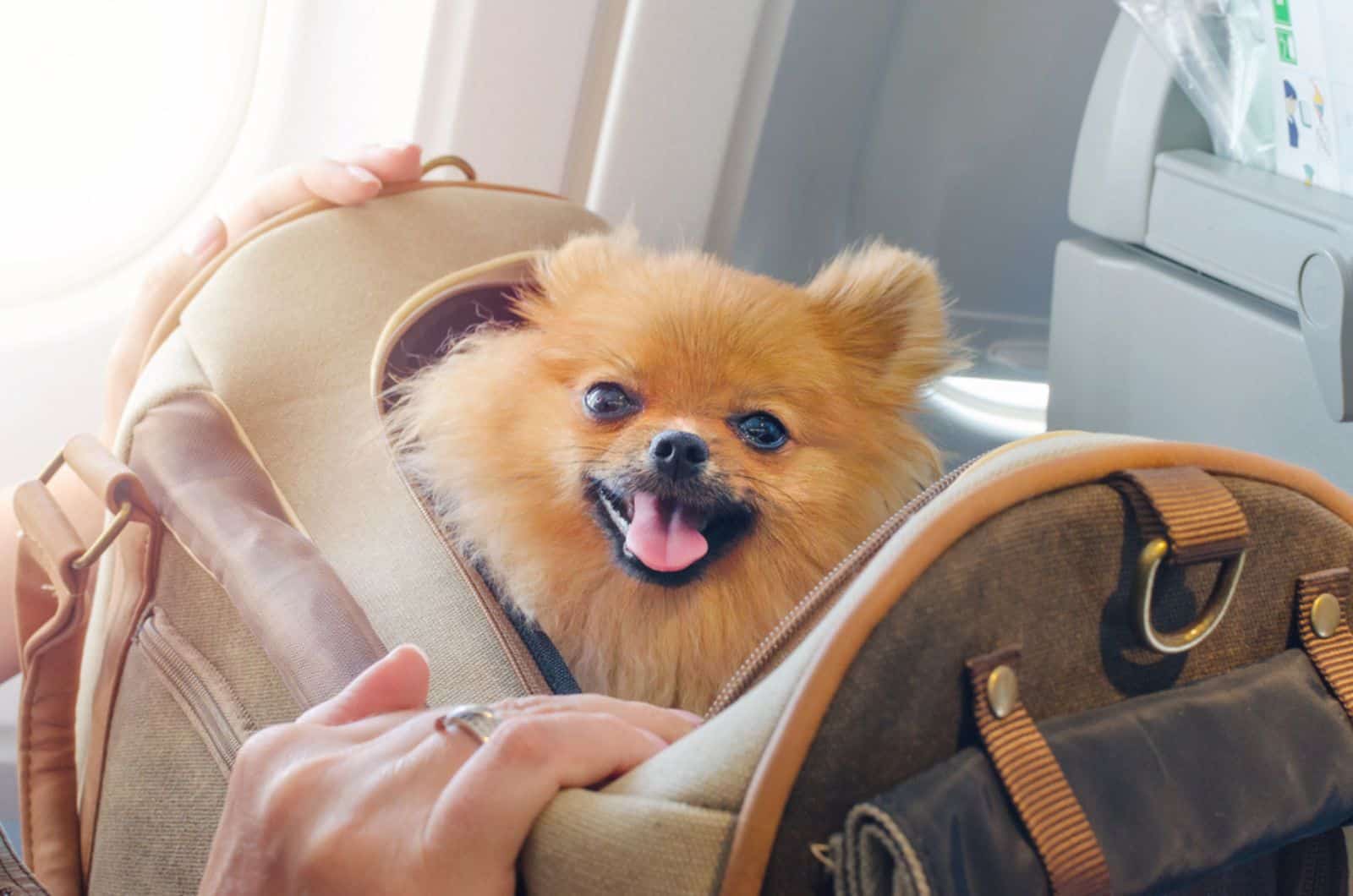
The ideal way to fly with a dog is to have your dog with you in cabin. The dog will be under less stress and will feel safe with its owner by its side.
Even if the dog is a bit nervous during the flight, you will be able to comfort him and pet him so that he knows he is not alone.
This sounds great, but unfortunately it doesn’t apply to all dogs. Airplanes have limited space, which means that in order to fly in the cabin with you, your dog must meet the size and temperament criteria.
So, if you have a small dog, you will probably be allowed to bring it into the cabin with you. Large dogs, unfortunately, will need to go to the cargo hold.
Dogs traveling in the cabin with their owners should be placed in a pet carrier that should be located under the owner’s seat. If your dog is medium or large, this will be impractical.
If you don’t have enough information on what are your possibilities regarding flying with a certain dog breed, you can find all important data on the official International Air Transport Association (IATA) website.
2. Familiarize The Dog With The Dog Carrier Before The Flight
In some situations, dogs can surprise us when they suddenly get scared of something inside the house, like a new vacuum cleaner or any other object they haven’t seen before. Simply put, dogs like routines and things that are familiar to them, and new situations and environments often make them uncomfortable.
In order to better prepare your dog for flying, it would be good to introduce him to the dog carrier even a few weeks before the flight itself. Allow the dog to smell the carrier and get into it, so that he slowly gets used to it.
Positive reinforcement is essential with getting your dog used to the per carrier. If you have trouble getting your dog to enter the carrier, you can entice him by placing his favorite treat or toy inside the carrier. This way, you will be creating a positive association with the carrier for your dog.
After a few days, the dog should begin to perceive the carrier as a safe place, so it will not be scary and unfamiliar to him when he has to spend several hours in it on a flight.
3. Socialization Is Crucial
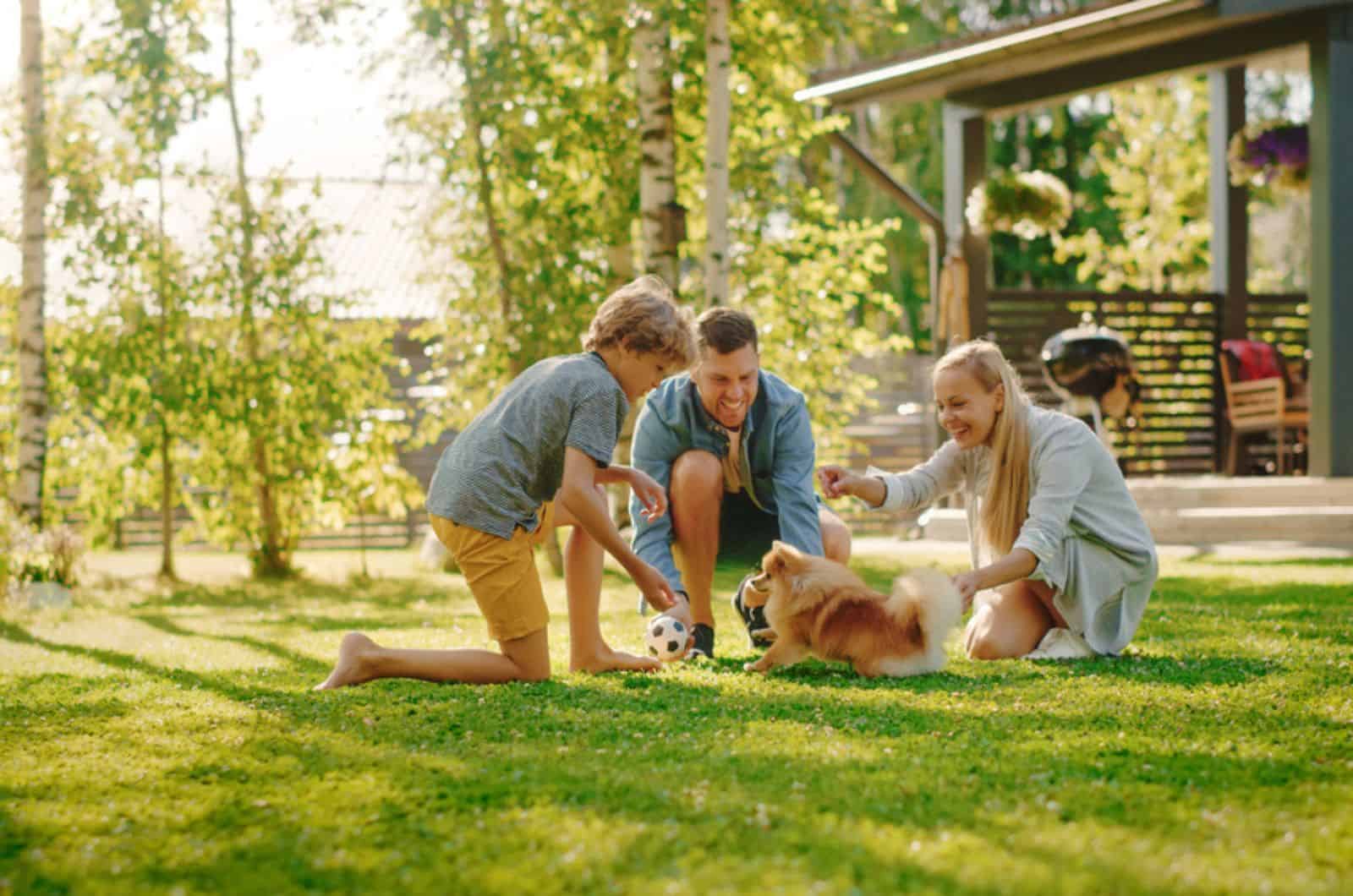
If you have only recently brought your puppy home from the kennel, you should definitely wait a little longer before traveling by plane.
Puppy socialization is one of the most important parts of your coexistence with a new pet; professional breeders always take care of the socialization of dogs, but it is equally important that you establish personal contact with your new dog.
Moving to a new home is a stressful period for any dog and it will need a certain period to get used to the new owners. Only when the dog is socialized with you and your family members should socialization with other people and other animals in parks and on walks follow.
When a dog is regularly exposed to meeting strangers, it will not be stressed when it sees a large number of unknown people on a plane. If he has not met other people outside your home, there is a good chance that the dog will be scared and will bark loudly in fear during the flight.
4. Take Your Dog To The Vets Before Flying
Apart from the fact that it is very important that the dog is socialized so that you can keep it calm during the flight, it is equally important that the dog is completely healthy.
Therefore, before flying, it is recommended that you take your puppy to the vet for a check-up. If you have a brachycephalic breed, such as Pugs, Bulldogs, or Shih Tzus, your vet will probably give you some extra advice while flying, as these dogs can have breathing issues on the plane.
In addition, it is very important that you have a certificate that your dog has received all the necessary vaccinations. If the veterinarian confirms that your dog’s health is in perfect order, there is no obstacle to flying.
So, to be able to fly with your furry friend, you should possess the dog’s health, microchip, and vaccinations certificates.
5. Make Sure Your Dog Is Comfortable

Your dog will most likely travel in a carrier under your seat on the plane. However, there is a possibility that the airline you are flying with does not require dogs to be under the seat, in which case you can place the carrier on your lap and you will be able to pet your pooch every time he squeals.
This is something you should definitely check before the flight, as not every airline has the same rules regarding flying with pets.
In any case, wherever your dog is during the flight, it is important that he is as comfortable as possible. Even if the dog is under your feet, this does not mean that you cannot pet him from time to time, and talk to him quietly all the time so that he feels your presence.
When flying with pets, the most important thing is to find a balance so that your dog feels comfortable, and so that you do not disturb the comfort of other passengers on the flight.
6. Make Sure Your Dog Is Tired Before The Flight
Physical and mental stimulation is very important for a dog’s health and happiness. If you’ve ever noticed that your dog suddenly wakes you up during the night with persistent barking, and you couldn’t figure out what exactly it’s asking you to do, it’s possible that your dog was acting nervous because it didn’t exercise enough (or at all) that day.
When the dog has regular activity, and when you offer him various forms of mental stimulation, there is a greater chance that the dog will be satisfied and will sleep better, and let you rest too!
This is also important when flying. It would be very helpful if your dog had any form of exercise on the day of the flight. In this case, there is a great possibility that your dog will use the flight time for a short nap!
7. Get To The Airport On Time
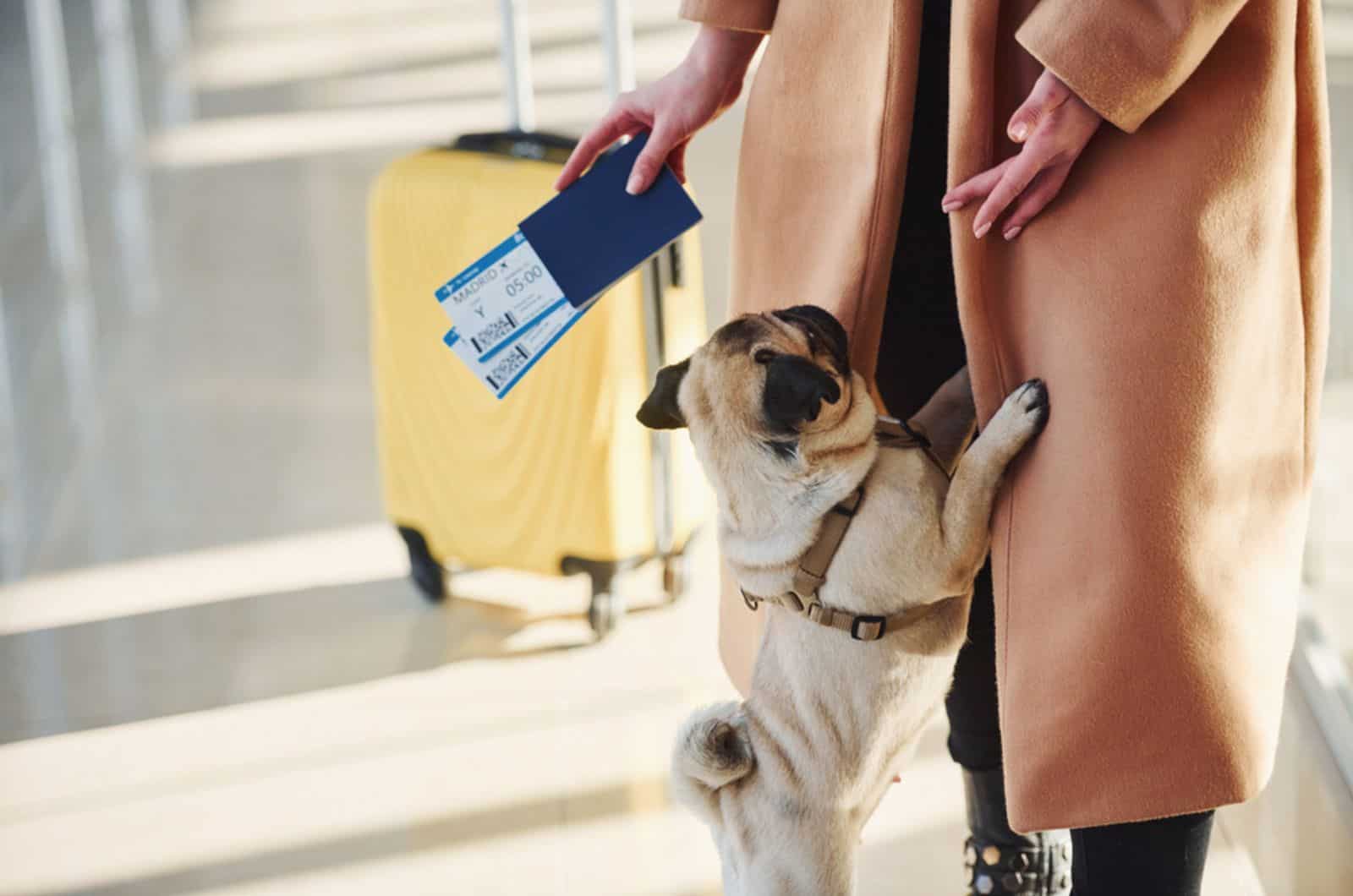
Anyone who has ever flown knows how important it is to come to the airport on time. This way you will avoid all potential crowds, and you will have plenty of time to prepare for your fly. This is even more important when you fly with your dog.
If you are coming late, your dog might become even more nervous if you are running all around and trying not to miss your flight.
Instead of this, you should come on time and let your dog meet the new surroundings. If you are walking slowly and comforting your pooch at the same time, he will feel safe and protected.
8. Necessary Equipment
If you have a direct flight that doesn’t take long, you’re probably wondering if you even need to carry food and water for your dog, or any other extra equipment.
No matter if you have a direct flight or layovers, it is recommended that you do not feed your dog immediately before the flight, in order to reduce the possibility of the dog developing any stomach problems during the flight.
But in any case, it would be a good idea to bring some dog food and water for your pet. You should also bring a pee pad, and cleaning bags and wipes in case an accident occurs due to the dog’s fear. If your puppy is still not perfectly potty trained, it wouldn’t be a bad idea to think about puppy diapers.
Also, it would be good for a dog to have a chew toy to entertain with during the flight.
9. Pheromone Calming Collars Or Sprays
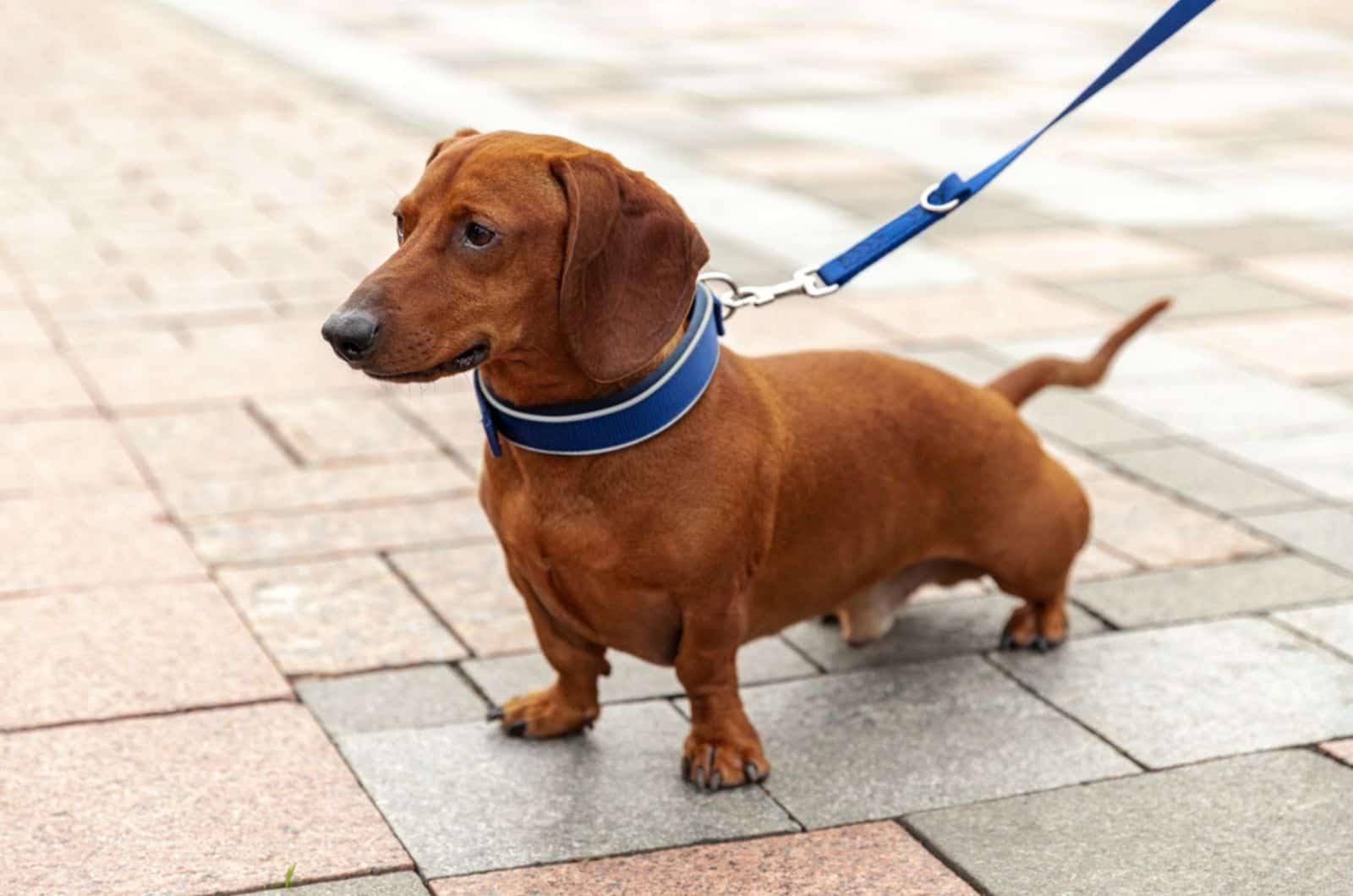
If new environments and new people cause quite a lot of stress and anxiety in your dog, one of the solutions to calm the dog during the flight is a pheromone spray or a pheromone collar.
This collar is a dog collar with synthetically simulated pheromones that helps calm the dog in stressful situations. These pheromones have a positive and calming effect on the dog in situations that would otherwise cause him to feel insecure and scared.
If you can characterize your puppy as a breed that whines a lot, or your dog usually shows it is stressed by shaking, barking, or licking its paws excessively – then this calming collar would be a wonderful solution for you to fly with your anxious dog carefree.
10. Sedatives
If there is no other way for you to fly with your dog, you can ask your vet to prescribe some anti-anxiety medication for your pooch.
The American Veterinary Medical Association does not recommend giving sedatives for dog travels, however, in some cases, many pet owners will not have other options.
The perfect scenario would be you flying with your dog without having to use tranquilizers, but, unfortunately, the flying experience might be too stressful for some dogs.
If this is the case with your fur baby, a vet might prescribe you some medications, such as Alprazolam, Gabapentin, or Trazodone.
We emphasize that you should only give these medicines to your dog following the instructions of your veterinarian.
The bad thing about these tranquilizers is the occurrence of unpredictable side effects at high altitudes, so they can cause breathing problems or cardiovascular problems in some dogs. Of course, we cannot know in advance how our dog will react to a sedative.
11. Make Sure You Are Calm, Too
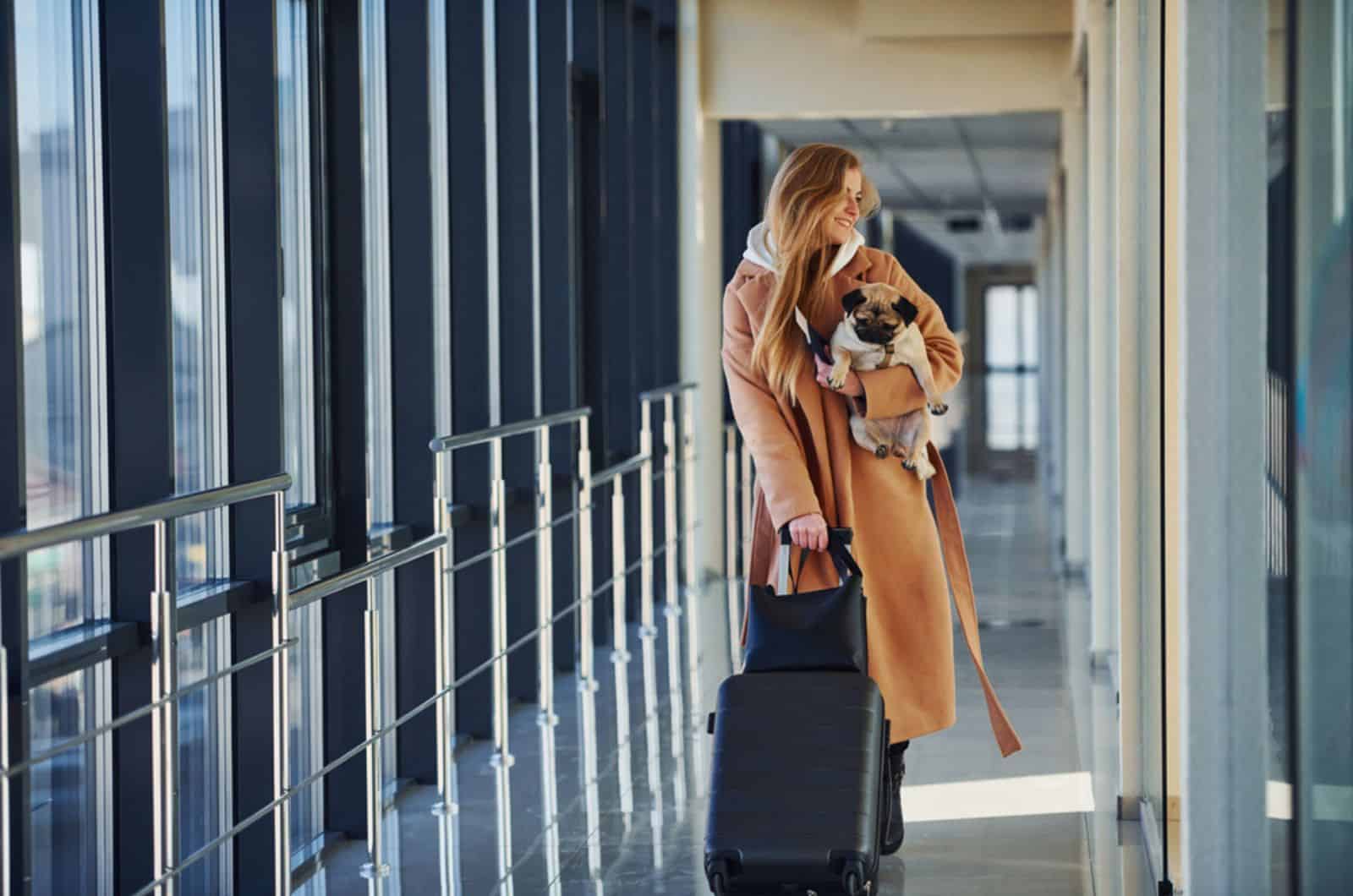
Our dogs can sense our emotions very well; I’m sure your furry friend has tried to comfort you at least once after noticing you were sad.
If you are trying to calm down your dog, with whom you are about to get on the plane, and at the same time you have a nervous and frightened tone, there is a high possibility that your dog will be quite unconvinced.
Therefore, you should work on being calm yourself. Ensure yourself that everything will be fine and try to prove it to your dog in the same way. Comfort him in a calm tone during takeoff and make sure your pup feels that you are calm and confident.
FAQs
What Can I Give My Dog To Keep Him Calm On A Flight?
You can give your dog his favorite treat or some dog food to keep him calm during the flight. Also, you can give him his favorite toy or blanket to comfort him if he is too stressed.
You can also give your dog a sedative, but this is something that is not highly recommended, especially if your dog is prone to breathing problems.
However, if you believe your dog will be too nervous during the flight without a sedative, then you should consult your vet on the best medicine for your pet’s anxiety.
What Should I Do If My Dog Is Barking On The Plane?
Dog barking is the most normal thing about one furry friend – some of them might even bark during the sleep! But, when a dog barks during the flight, many passengers will usually complain about this.
So, you might be worried about what to do if your dog starts to bark excessively during the flight. Remember that you are the only person that can calm your dog and make him stop barking.
Here you should do what you usually do when your dog starts barking – think about what normally helps you quiet your dog.
Also, you should ensure your dog is as comfortable as possible in his dog carrier, since he might be barking if something inside the carrier is bothering him.
Also, don’t forget the importance of the potty break for your dog right before the flight, since your dog might be nervous because he needs to defecate.
Furthermore, dog treats are something you shouldn’t get on a plane without!
Summary
Flying with a dog may not sound like the most pleasant experience, especially if your dog is already scared and anxious about new experiences. But, with our tips on how to keep a dog calm on a plane, we hope that the experience of flying with your pet will still be a pleasant one.
It is important that the dog feels safe and comforted, and that you have tools with you that can be helpful in case of need, such as dog treats or your dog’s favorite toy.
Also, it is very important that your dog is completely healthy and socialized. The best possible scenario is to avoid giving sedatives to our dogs, but if there is no other possibility, and with the approval of the veterinarian, in this way your dog can still get on the plane with you.
We think it would be a shame if our dogs didn’t see all the beautiful places we see, right? We wish you many safe and pleasant flights with your furry pets!















